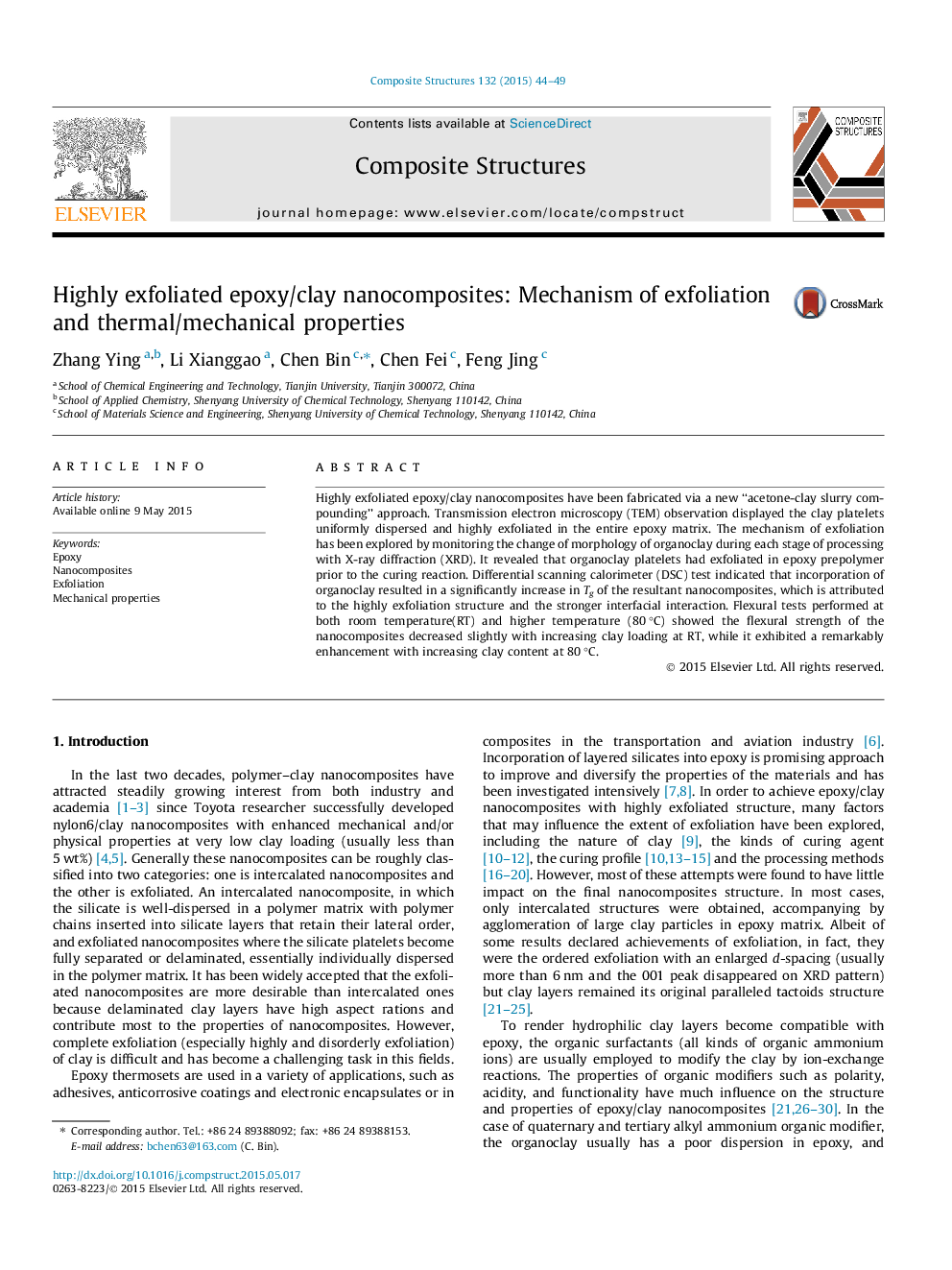| Article ID | Journal | Published Year | Pages | File Type |
|---|---|---|---|---|
| 251065 | Composite Structures | 2015 | 6 Pages |
Highly exfoliated epoxy/clay nanocomposites have been fabricated via a new “acetone-clay slurry compounding” approach. Transmission electron microscopy (TEM) observation displayed the clay platelets uniformly dispersed and highly exfoliated in the entire epoxy matrix. The mechanism of exfoliation has been explored by monitoring the change of morphology of organoclay during each stage of processing with X-ray diffraction (XRD). It revealed that organoclay platelets had exfoliated in epoxy prepolymer prior to the curing reaction. Differential scanning calorimeter (DSC) test indicated that incorporation of organoclay resulted in a significantly increase in Tg of the resultant nanocomposites, which is attributed to the highly exfoliation structure and the stronger interfacial interaction. Flexural tests performed at both room temperature(RT) and higher temperature (80 °C) showed the flexural strength of the nanocomposites decreased slightly with increasing clay loading at RT, while it exhibited a remarkably enhancement with increasing clay content at 80 °C.
